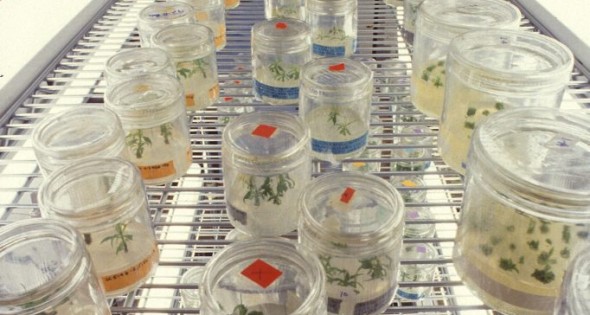
Agri-technology adoption begins in earnest amidst the digitization of farming
01 Jun, 2022
How new technologies and rapidly spreading connectivity with the internet are profoundly transforming farming
 An October, 2020 McKinsey report found that agriculture must embrace a digital transformation enabled by connectivity—but it’s behind. “Agriculture remains less digitized compared with many other industries globally,” the report found. Past advances were mostly mechanical, in the form of more powerful and efficient machinery; and genetic, in the form of more productive seed and fertilizers. “Now much more sophisticated, digital tools are needed to deliver the next productivity leap,” the report concluded.
An October, 2020 McKinsey report found that agriculture must embrace a digital transformation enabled by connectivity—but it’s behind. “Agriculture remains less digitized compared with many other industries globally,” the report found. Past advances were mostly mechanical, in the form of more powerful and efficient machinery; and genetic, in the form of more productive seed and fertilizers. “Now much more sophisticated, digital tools are needed to deliver the next productivity leap,” the report concluded.
Some of those technologies already exist to help farmers more efficiently and sustainably use resources, while more advanced digital systems and processes are in development. “These new technologies can upgrade decision making, allowing better risk and variability management to optimize yields and improve economics,” according to the report. For example, when deployed in animal husbandry, updated digital-based process can enhance the well-being of livestock, addressing the growing concerns over animal welfare.
The McKinsey report also found that, by the end of the decade, enhanced connectivity in agriculture could add more than $500 billion to global gross domestic product, a critical productivity improvement of 7 to 9 percent for the industry.
What does it all mean today?
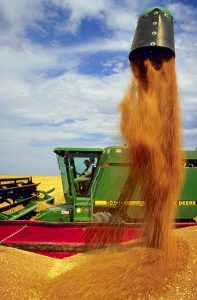 Even in the United States, only about one-quarter of farms currently use any connected equipment or devices to access data, and that technology isn’t exactly state-of-the-art, running on 2G or 3G networks that telcos plan to dismantle. Or, they are working on very low-band internet-of-things (IoT) networks that are complicated and expensive to set up.
Even in the United States, only about one-quarter of farms currently use any connected equipment or devices to access data, and that technology isn’t exactly state-of-the-art, running on 2G or 3G networks that telcos plan to dismantle. Or, they are working on very low-band internet-of-things (IoT) networks that are complicated and expensive to set up.
There is a slow but sure transition underway. Nationally, according to the United States Department of Agriculture (USDA) figures, 75 percent of farms reported having access to the internet, with 73 percent of farms having access to a desktop or laptop computer, led by Idaho, California, Oregon, Washington and Wyoming.
Farms that used a desktop or laptop computer to conduct farm business was up just 1 percent from 2017. Yet over half of the farms in the U.S. used a smart phone or tablet to conduct farm business, compared to 44 percent in 2017.
In 2019, 26 percent of farms used satellite systems for GPS tracking, and 22 percent of farms used a Digital Subscriber Line (DSL) to access the internet. Since 2017, satellite and DSL continue to be the most popular choices that U. S. farms use to access the internet.
There are three key ways in which satellites can support farmers to make efficient, sustainable choices: mapping, or understanding how large areas of land are used for different types of agriculture; measuring, or plugging satellite data into complex algorithms to provide measurements on a range of properties, such as yield and crop growth stage; and monitoring, where over time, images enable scientists and farmers to see how land use has developed, or spot changes in rainfall and drought patterns.
A developing skillset is needed
 Recent evidence from the digitalization in agriculture suggests that new technologies require developing capabilities in abstract and analytical skills substituting skills in routine tasks, according to a research article by the Lincoln International Business School, “A vision of the farming sector’s future: What is in there for farmers in the time of the Second Machine Age?”
Recent evidence from the digitalization in agriculture suggests that new technologies require developing capabilities in abstract and analytical skills substituting skills in routine tasks, according to a research article by the Lincoln International Business School, “A vision of the farming sector’s future: What is in there for farmers in the time of the Second Machine Age?”
This is not the end game for farmers, according to the article, as new partnerships between technology providers and agribusiness players emerge while digitalization and connectivity become a strategic issue. “Thus, while the first Industrial Revolution led to machines replacing ‘muscles’ the new Digital Revolution is leading to machines replacing ‘brains and souls’, and it may eventually end family farming as we know it,”
As the technology progresses, equipment will ultimately be able to tailor decisions on a yard-by-yard basis. Robots can already do much of the harvesting of lettuce and tomatoes in greenhouses. In the dairy industry, robotic milking and computer-controlled feeding equipment allow for the careful management of individual animals within a herd.
And there is a similar dramatic technological revolution happening with the genetics of plants and animals, making it much easier to identify individual plants and animals that are particularly robust or productive and less dependent on nature.
This dramatic technological shift has inspired a related and similarly significant trend towards globalization of trade, creating a rise in the global demand for farm products.. which has created strong incentives for further technology adoption in pursuit of productivity. All this new productivity is dependent on a workforce that is able to adapt from sometimes centuries-old methods of farming.
The economic picture of agribusiness today
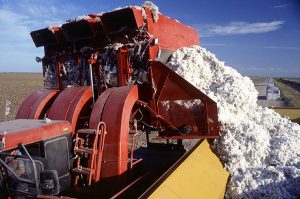 There were over 10,000 fewer farms in the U.S. from 2017 to 2019. Total land in farms, at 897,400,000 acres, decreased 2,100,000 acres from 2017 to 2018.
There were over 10,000 fewer farms in the U.S. from 2017 to 2019. Total land in farms, at 897,400,000 acres, decreased 2,100,000 acres from 2017 to 2018.
But the average farm size continued to increase in 2019 as the number of farms declined. Arizona, Montana, Nevada, New Mexico, North Dakota, South Dakota all had the largest sized farm (at least 1,000 acres).
But agriculture economists with the American Farm Bureau Federation are still trying to get a handle on what exactly is going on. It’s not been easy over the last few years, given the effects of the pandemic on all agricultural businesses (and the supply chain that they use to get to market).
One head-scratcher: Nominal net farm income in 2020 was nearly $120 billion, up 43 percent from 2019 and the second-highest of all time. Yet, farm cash receipts from crop and livestock sales are down $3 billion and the lowest since 2016.
The USDA’s most recent Farm Sector Income Forecast, released February 4, anticipates a slight decline in net farm income for 2022. U.S. net farm income is currently forecasted at $113.7 billion for 2022, down 4.5 percent, or $5.4 billion, from 2021’s $119.1 billion.
What accounts for the decline?
A significant portion of the decline in net farm income is linked to an expected dramatic decrease in federal support to producers who are now expecting much less pandemic-related disaster assistance.
Economists at the American Farm Bureau Federation report that direct government payments are forecast to decrease by $15.5 billion, or 57 percent, between 2021 and 2022. The decrease corresponds to reductions in both USDA pandemic assistance, which includes payments from the Coronavirus Food Assistance Programs, and non-USDA pandemic assistance programs, such as funds from the Small Business Administration’s Paycheck Protection Program.
From 2021 to 2022, federal payments through USDA’s pandemic assistance initiatives are expected to drop $4.4 billion, from $7.8 billion to $3.4 billion, or 56 percent, and non-USDA pandemic assistance is expected to disappear completely.
In addition to the reduced pandemic-related payments, the USDA’s Market Facilitation Program, which provided a series of direct payments to farmers and ranchers impacted by trade retaliation, ended in 2021 and will not be part of net farm income going forward.
Other reasons that ag businesses are struggling is production expenses, which are forecast to increase by $20.1 billion this year, or 5.1 percent, reaching $411.6 billion in 2022, the highest production costs farmers have ever faced.
This includes increases in costs like cumulative feed, which is expected to increase nearly $4 billion, or 6.1 percent, to $68.9 billion. Fertilizer, lime and soil conditioner costs are expected to increase $3.4 billion, or 12 percent, from $28.5 billion to $31.9 billion.
Increased production costs in the manufactured inputs category in 2021 include pesticides, which are expected up $308 million, or 2 percent, from $16.9 billion to $17.2 billion; and fuels and oils, which are also expected up 2 percent, or $329 million, from $15.9 billion to $16.2 billion.
Solutions to bettering farm economics are cropping up. For example, as the ag-tech space heats up, an increasing number of small tech start-ups are launching products such as FarmLogs, an app that helps manage day-to-day operations with real-time field condition data; 640 Labs, a precision farming platform that collects, analyzes and distributes data to help optimize farming operations; and Climate Corporation, examining weather, soil and field data to help farmers determine potential yield-limiting factors in their fields.
How the sector can hold on and reinvent itself
 The new and accessible technologies are helping to better understand and essentially manage nature for first time in history of farming.
The new and accessible technologies are helping to better understand and essentially manage nature for first time in history of farming.
Productivity will get better, but it also means that there will be a fundamental organizational change away from family control of agricultural production towards more corporate farms.
The generations of know-how that farmers have about the local weather and soil conditions is now coming out of those minds, and being transformed into data banks for use by new intelligent technologies.
Weaving in more new intelligent technologies within the farm life is an awesome goal. The National Agricultural Statistics Service’s Census of Agriculture reported that family farms account for almost 96 percent of the 2,204,792 farms in the U.S. Creating better synergies between those farms to better use technologies such as drones and crop monitoring via satellites—and building in all that data from the experiences and methodologies of farmers—will take time.
The clock is ticking
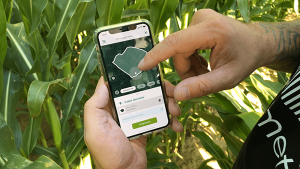 An estimated 70 percent of U.S. farmland will change hands in the next 20 years, according to the National Institute of Food and Agriculture, but many family operations do not have a next generation skilled in or willing to continue farming.
An estimated 70 percent of U.S. farmland will change hands in the next 20 years, according to the National Institute of Food and Agriculture, but many family operations do not have a next generation skilled in or willing to continue farming.
That farm built on generations of a family could go out of business quickly unless they embrace the competitive advantages of agri-technology today.
That is the challenge for the survival of the family farm. There is a lot at stake. But there are new tools and resources available and ready to help. “We’re finding that digital tools like artificial intelligence, satellite imaging, smartphones, and other modern technologies, will intrigue youth anywhere in the world,” Trevor Nicholls, CEO of the Centre for Agriculture and Bioscience International (CABI), a nonprofit intergovernmental development and information organization focusing primarily on agricultural and environmental issues in the developing world. “These (digital tools) will hopefully have an impact on bringing more youth back into farming, as they start to see it as technologically enabled rather than straightforward muscle power.
“I’m very optimistic for family farmers. They are incredibly resilient and resourceful people, and they survive and thrive in pretty difficult circumstances. But the world is getting more challenging for them by the day,” Nich
Related Posts
-

New Sustainability, New Power Handling Ideas are Part of Data Center Evolution
-
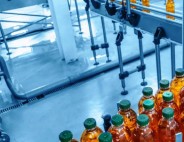
A Huge Industry Begins Reworking Itself
-

Airports Signaling There’s a Recovery on the Horizon
-

Global and U.S. Seaports Struggling in a State of Economic Flux
-

More Foreign Trade Zones Handling an Ever Growing Bounty of Goods
-

Business Services and Strategic Planning
-

The Industrial Manufacturing Revolution Is Already Under Way
-

Innovations Driving Demand
-

Intermodal Expansion
-

Development with Wings









